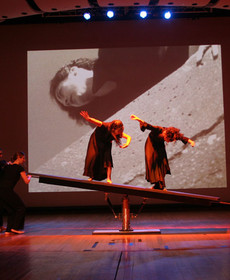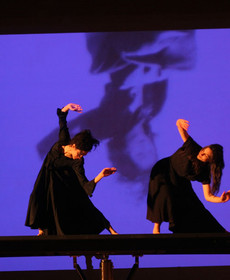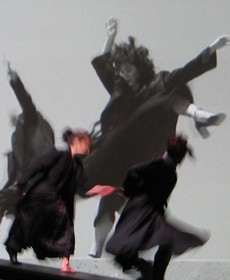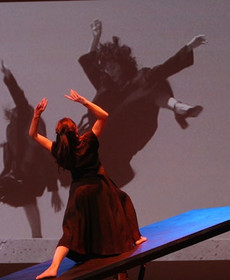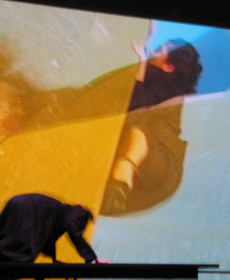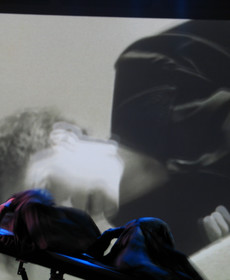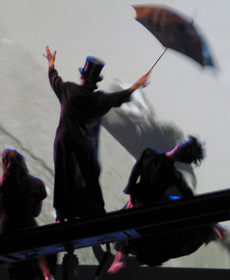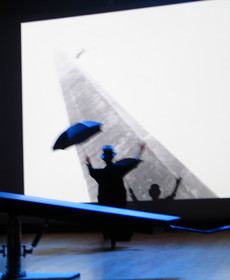TILT
is a videodance film by choreographer Paula Josa-Jones and video artist Ellen Sebring, with dancers Ingrid Schatz, Alissa Cardone and Josa-Jones. TILT explores the fragile nature of balance, the tenuous cord with which we are tethered to a sense of normalcy, the rupture of change without warning, and the abrasion of world events upon our lives. Two women teeter along a sea wall, coats buffeted by wind into shapes of flight. The wall falls away and imparts an unstable gravity which redefines the dancers' movement as they negotiate their tenuous grip and are thrust into a world with new physical laws.
Artists Josa-Jones and Sebring wanted to bring TILT to life onstage as well as onscreen. Balance, grace and agility are all qualities a dancer seeks, but what happens when the dance adds a mechanism designed to disrupt the level plane and shift gravity? The result is a performance that combines large-screen video, live dancers, and a gravity disrupting mechanism called a "levitron," designed by MIT faculty member, Geoff Benson.
MIT’s Kinaesthetics Lab was issued a mechanical-engineering challenge. It wasn’t to design a solar-powered car or a remote-controlled robot, but to build a swaying dance platform. The challenge came as Paula Josa-Jones, a Boston-based choreographer, and Ellen Sebring, a research associate in MIT’s Visualizing Cultures project, worked to build a dance based on the concepts of “altered" gravity and lost balance."The idea was to experiment with ways to mirror the 'tilt' effect, created by camera movement in the videotape, on stage," said Sebring, who notes that when gravity is disrupted the dancers are thrown out of balance, evoking new types of dance movement. "We hope to get some ideas as to how to build a more sophisticated levitron in the future."
TILT.com